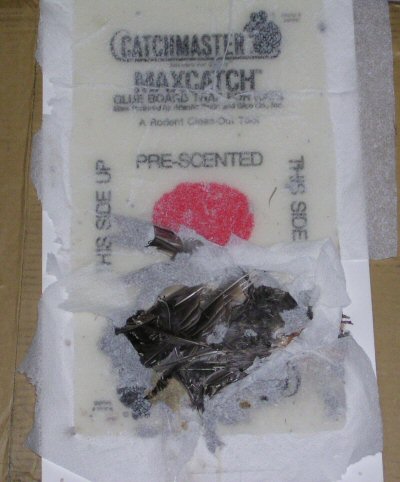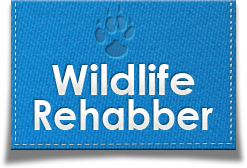Removing Wildlife Trapped On Glue Boards

An adult robin was removed from this trap. Note the tissue paper applied to all exposed glue areas. The remaining feathers from the abdomen were the result of the bird attempting to struggle free during initial contact. No primary flight feathers were damaged during removal and the bird was released as soon as new feather growth was completed.
REMOVAL
Immediately cover all exposed glue areas with tissue paper. This will allow you to work without becoming glued to the trap, and will also prevent the animal from further contact with additional glue areas as it struggles during removal. As you extract the animal, use pieces of tissue paper to cover glue areas that are exposed as you gradually free the animal. If you do not do this, it will continually get re-attached.
It is best to remove limbs/wings first to reduce the likelyhood of fractures. Begin by gently lifting a small section at a time. The glue has some “give” to it and will stretch slightly, giving you narrow points of access. Using small finely-tipped scissors, lift a small section and snip the tips of the fur/feathers that are closest to the glue trap. If done properly, you will be removing less than 1/16 inch of fur/feathers. Remember to apply pieces of tissue to newly exposed glue sections. Mineral oil can be applied to areas where fur/feathers are too deeply embedded. But fur/feather damage will still exist, requiring the animal/bird to be rehabbed until new growth appears. Snipping tips is a cleaner, quicker method.
Continue this process until the animal is completely extracted. Immediately treat the animal for shock/dehydration then place it in a secluded area with access to water until stress levels appear to have reduced.





